THE APPIAN WAY: DIRECTIONS, SIGHTS, and GASTRONOMY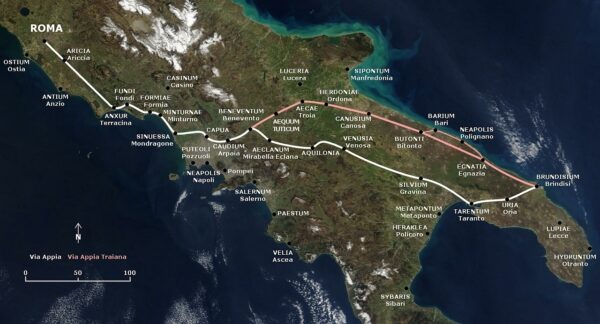
On July 31 UNESCO proclaimed the Via Appia or Appian Way Italy’s 60th World Heritage Site. Running about 300 miles south to Brindisi, originally paved with large lozenge-shaped basalt cobblestones, and lined with cypresses and umbrella pines, Via Appia was begun in 312 BC by its namesake, the blind Censor Appius Claudius Caecus, at first for military reasons—to allow Rome to conquer the southern half of the “boot”, and later essential for trade even across the Adriatic Sea. Nicknamed regina viarum or “queen of the roads”, it’s the oldest of Rome’s consular roads and considered by many the world’s first highway.

Porta San Sebastiano
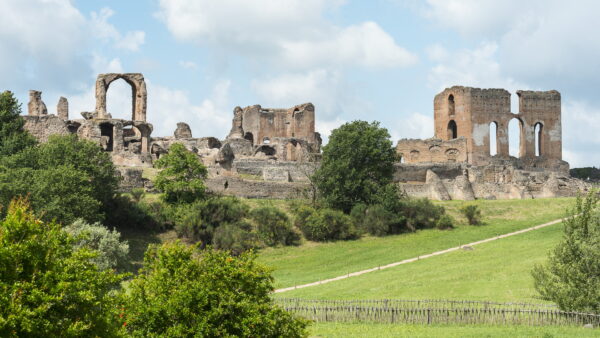
Villa dei Quintili
The ancient Romans, first the pagans and later the Christians didn’t bury their dead within the city limits, but instead along extra-urban roads. Thus, the monuments along the Via Appia’s first 5 miles from its starting point at Porta Capena near the Circus Maximus and through the Porta San Sebastiano are mainly pagan tombstones and family mausoleums, three Christian catacombs: of Calixtus, of Domitilla, and of St. Sebastian, and even a Jewish catacomb. Secular sights here include the Museum of the 3rd-century Aurelian Wall in the Porta, the red-brick ruins of a circus (racetrack) built by the 4th-century Emperor Maxentius, baths, and the 1st-century AD patrician Villa dei Quintili with its mosaic floors and a museum of finds.
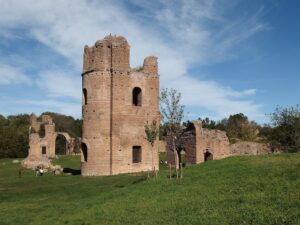
Circus of Maxentius
If you have time to visit only one catacomb, choose St. Calixtus (at No. 110) because with 18 miles of galleries, on four levels, it’s the largest. In the 3rd-century about 500,000 Christians were buried here including 16 popes and St. Cecilia, the patron saint of music.
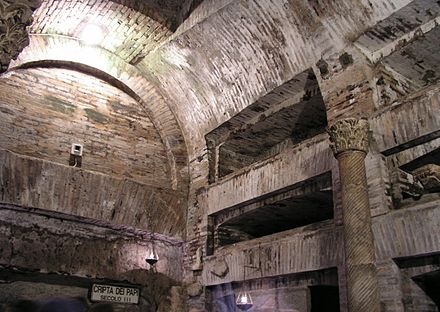
Tombs of early popes in the Catacomb of St. Calixtus
In 2023 some 60,000 tourists visited this first stretch of the Via Appia. The internet suggests several types of tour: by public transport, bicycle, e-bike, on foot on your own or with a guide or the most restful and my favorite the hop-on hop-off buses. To plan your visit in advance consult the Appia Antica Service Center, tel. +39-5135316, e-mail: puntoappia@parcoappiaantica.it or website: www.infopointappia.it. Other practical hints: Sunday is the best day to visit because private motor vehicles are banned; wear comfortable shoes and a sun hat, and bring a water bottle and sunscreen. If you’re tired at your tour’s end and opt for a taxi to return downtown, make sure it’s an official white one with its meter on and write down its logo before entering to avoid a fare dispute at destination.
Instead, if you decide to linger, the three best restaurants, all in or next to ancient monuments, are:
The closest to downtown at no. 68 is Priscilla at the foot of the 1st-century AD sepulcher of Priscilla, the wife of Titus Flavius Abascanus, a freedman of the emperor Domitian (at no. 76) It’s also opposite the Chiesa del Domine Quo Vadis, a small 17th-century church (at. No.51). Here St. Peter, who was fleeing persecution by the Emperor Nero, reputedly envisioned the risen Christ. According to tradition, Peter asked: “Lord, where are you going?”; Christ answered “I’m going to Rome to be crucified again.”, so Peter understood and turned back to meet his fate.
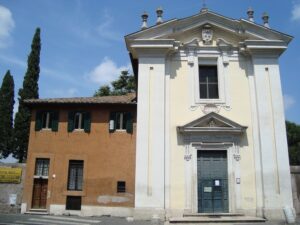
Chiesa del Domine Quo Vadis
The restaurant Priscilla, founded in 1902 by Margherita and her husband Nazzareno, both from near Rieti, were the grandparents of present owner Alessandro Ratini. However, it was first documented on a cadastral map as a post station and restaurant in 1436. My favorite Roman specialties here include: home-grown fried artichokes, tonnarelli cacio pepe, and pappardelle al cinghiale. Closed Sunday evenings.

Fried artichokes
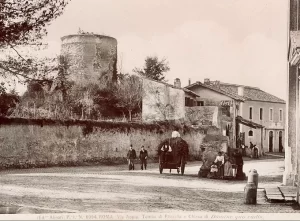
Early photograph of the Trattoria and Sepulcher of Priscilla
Also on Via Appia, at no. 139, is Archeologia, originally a grandiose tomb for a wealthy Roman official and his family. Like the pyramids of ancient Egypt, it was built not just to house the dead, but to dazzle passers-by and boost the owner’s reputation. Founded in 1804, Archeologia is the perfect dining location after a day of walking or bicycling. Only its location is ancient; its contemporary menu is very imaginative, if a bit sophisticated and pricey. I recommend the fish stew and the homemade gnocchi with calamari and cherry tomatoes. Open only in the evening. Closed Tuesday.
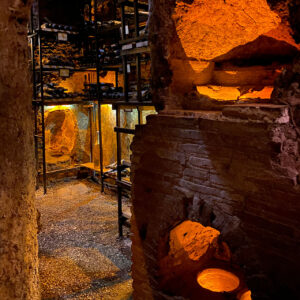
Cantina at L’Archeologia
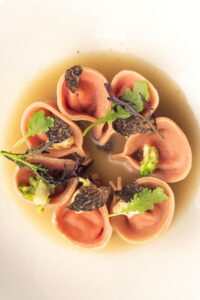
Tortelli di Ossobuco at L’Archeologia
Twenty years or so ago I wrote several articles for inflight magazines about where to eat in ancient ruins on the Via Appia Antica. Already retired then as a UN interpreter, Giulia Passarella no longer prepares her splendid Roman banquets in her garden beside a 2nd-century BC tomb and I was not yet acquainted with Priscilla or Archeologia. However, I was already friends with Massimo and Norina Magnanimi, the owners of Hostaria Antica Roma and included its first location and cuisine in all my stories.
In 1982 Massiimo and Norina from Alatri in Ciocaria, opened the Hostaria Antica Romana (at no. 87). It was also known as “Liberti” because it was originally a columbarium or tomb with niches for the urns of the Emperor Augustus 6,000 freed slaves. A National monument, there’d been a post station and restaurant here since 1793, but the rent became oppressive, so they moved to no. 176, across from the round tomb of noblewoman Cecilia Metella, whose father and husband were rich patricians and successful generals of late Republican Rome. Also near the small abandoned Church of San Nicola (at no. 161) and not far from the Catacombs of San Sebastiano (at no.136) , since the move Massimo and Norina have passed ownership to their affable son Paolo, whose tiramisù has always been to die-for.
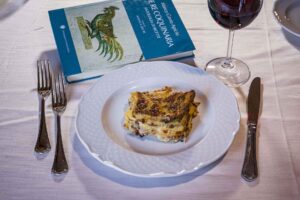
Patina Cotidiana

Garden at Hostaria Antica Roma
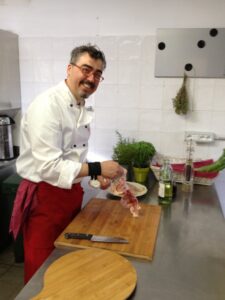
Paolo Magnanimi
Hostaria Antico Roma continues to feature family-recipes, a tasting menu of modern Roman dishes and a menu of ancient dishes attributed to Apicius, like patina cotidiana, Latin for “daily dish”, a mixture of omelet and tomato-free lasagna, pullum oxizomum, pieces of chicken cooked with leeks, olive oil, vinegar and garum (the ubiquitous ancient Roman salty seasoning made from macerated fish interiors), and tiropatina, Apicius’ version of crème caramel, to name a few. Obviously, no dishes include ingredients like tomatoes, potatoes or chocolate which Columbus brought back from the New World.
With advance notice owner Paolo will organize a private ancient Roman banquet not to mention that the beautiful garden is a favorite venue for school graduations, private parties, and weddings. Closed Sunday evenings and Monday. Reservations recommended.

I LOVE THIS ARTICLE. Lucy’s best yet. The photography was great, and I learned so much. I can only hope to replicate this trip before I croak. It brings antiquity to life.